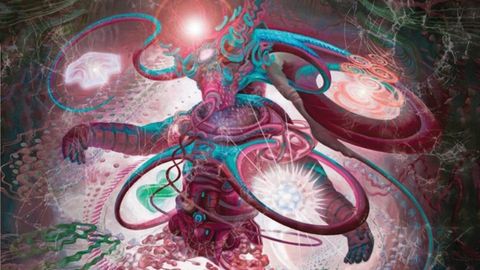This is one band who never make it easy for themselves. While some artists occasionally dabble in the concept area, Coheed And Cambria’s entire career is built around the evolving tale of The Armory Wars. As a consequence, each album serves as the soundtrack to an ongoing narrative arc, yet at the same time, the epic storyline is there to illustrate the music. Confused? The dichotomy is what makes the band constantly intriguing.
This is the second part of The Afterman double album. In part one, The Afterman: Ascension, cosmonaut/scientist Sirius Armory discovers that energy holding together the 78 planets, which make up The Keywork universe in which The Armory Wars is set, is in fact a form of afterlife for souls of the dead. Now with …Descension we find out what happens to Sirius when he returns home with news of this apocalyptic discovery.
It’s easy to get lost in the complicated maze of this intensely challenging story. However, the good news is that while the whole conceptual aspect works brilliantly here, you don’t need to have any interest in the actual detail of the unfolding plot in order to enjoy the album, because it works well enough in its own right as a flow of intelligently created music.
There’s an eerie, ambient feel to the album, one that gives the pervading atmosphere a dark hue. It’s claustrophobic and sucks you into the Coheed vortex, where the downbeat guitar sounds on songs like Gravity’s Union and Number City serve as a counterpoint for Claudio Sanchez’s wailing, plaintive vocal pleas. Just occasionally, there are hints of a more lilting, uplifting timbre, as on Away We Go, but then this is quickly dispelled when Iron Fist offers an acoustically driven sense of loneliness.
As this is a chapter in the storyline that tells of Sirius finding himself seemingly ostracised by society, despite (or maybe because of ) his remarkable revelation, there’s no happy ending. But on final track My Favourite, you do get the impression that the central character here does find a form of salvation. Presumably, though, we’ll have to wait until the next album to find out more.
The Afterman: Descension is both a thoughtful and thought-provoking album, and one that works on several levels. It’s proof that Coheed And Cambria are worthy of their own heroes, such as Rush and Pink Floyd, and is a landmark release for 2013.


